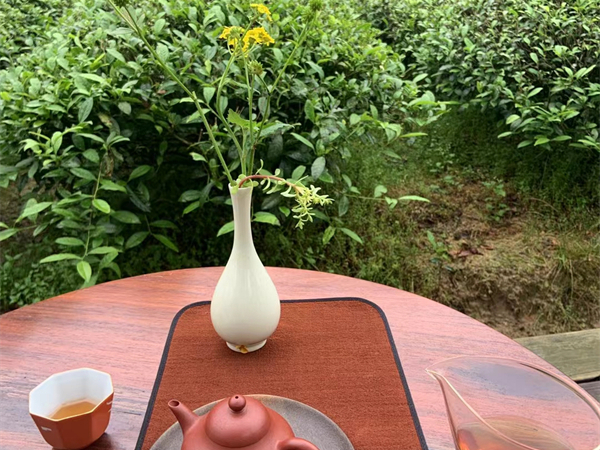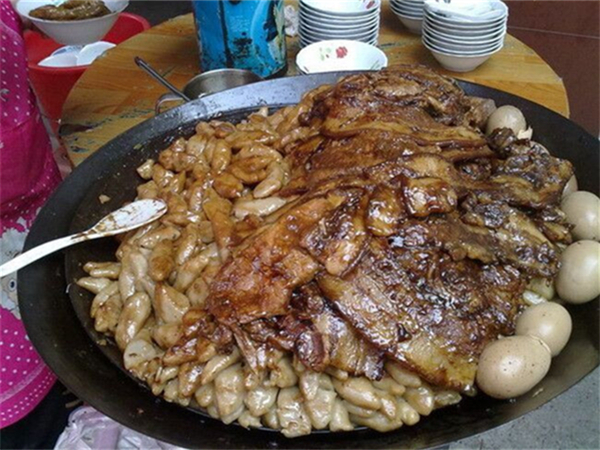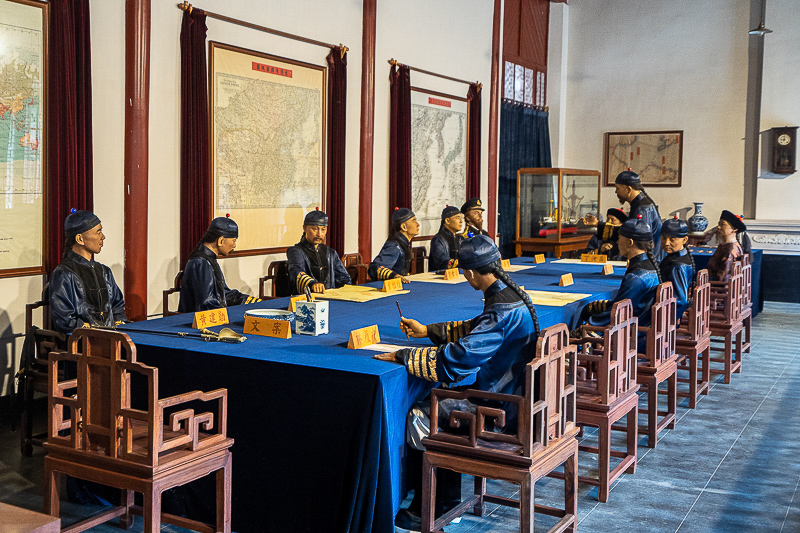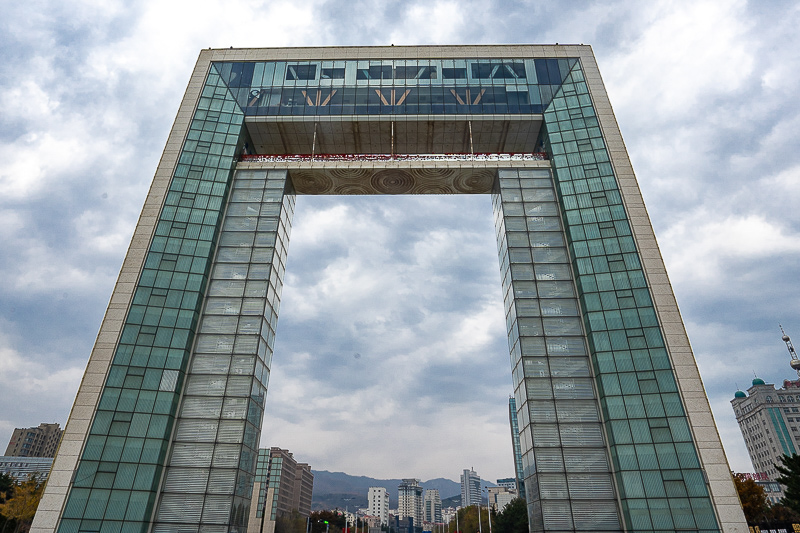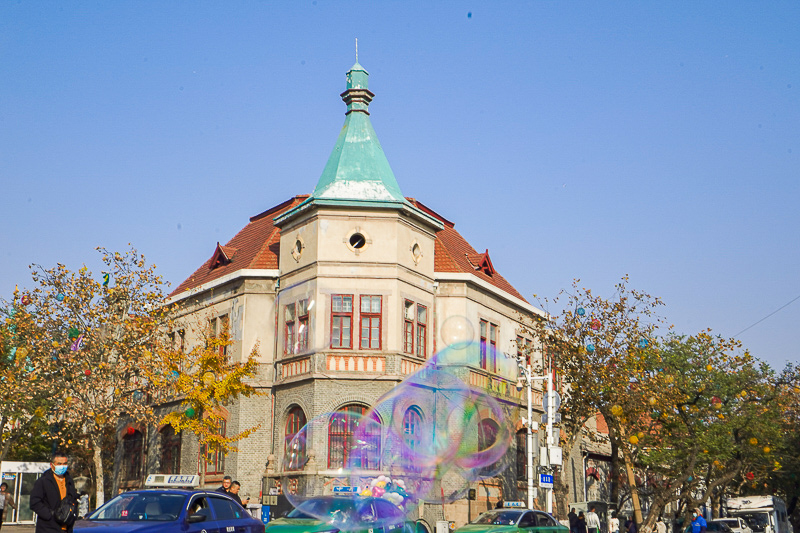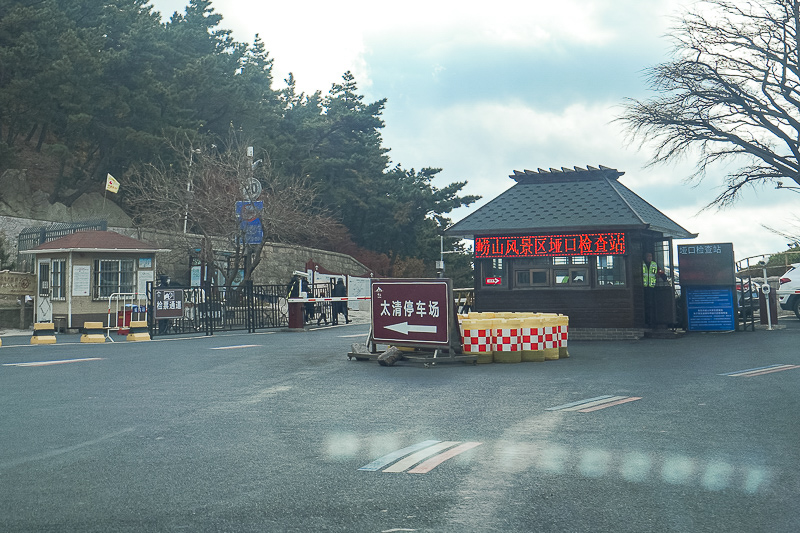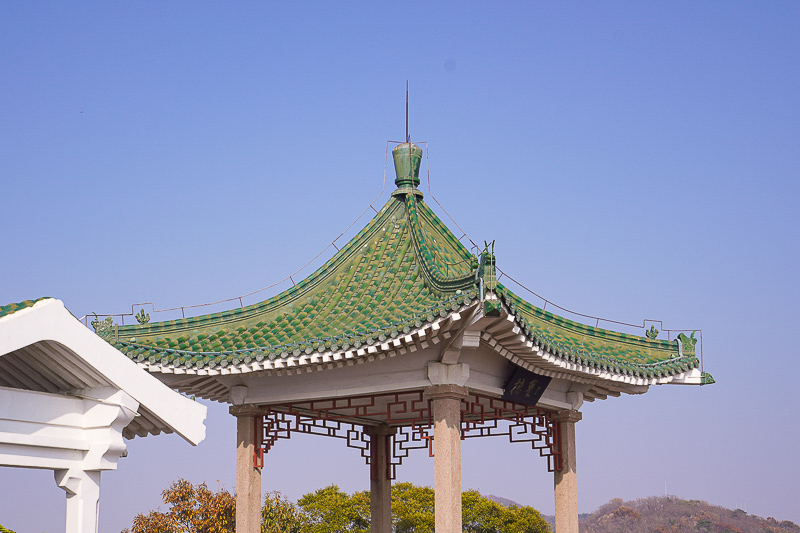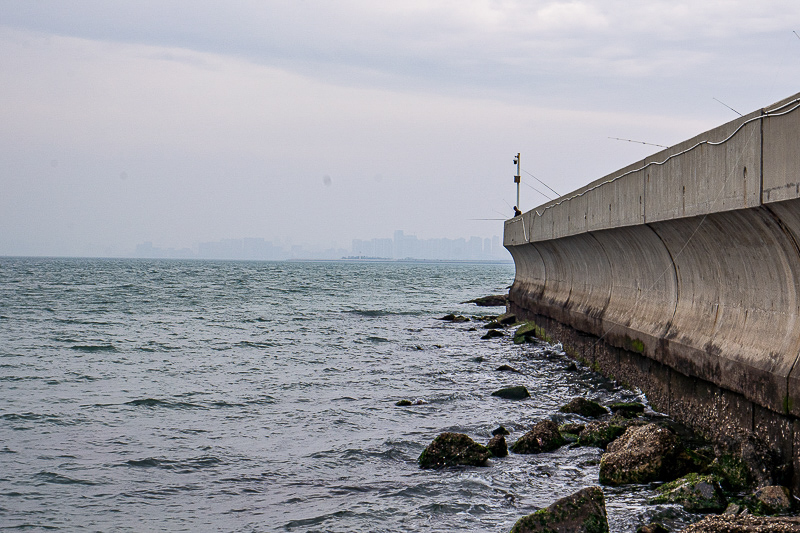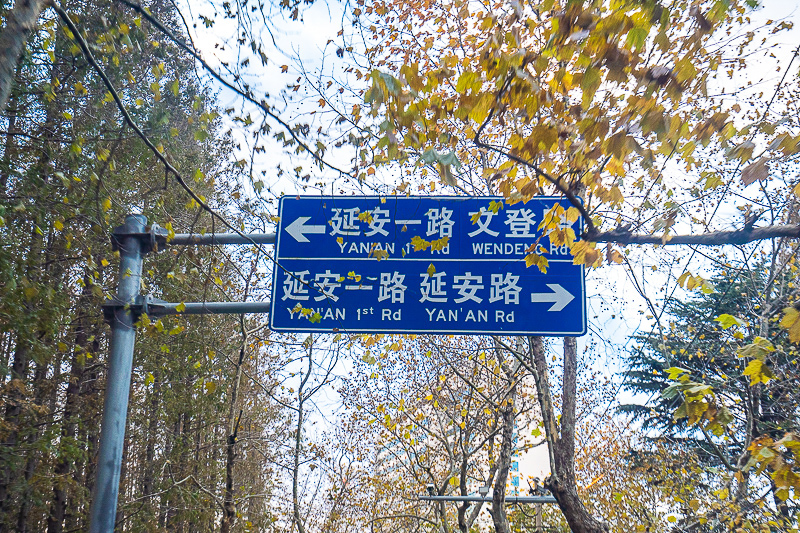本文目录
一、南岳衡山祝融峰中英文导游词
祝融峰是衡山七十二峰的最高峰,海拔1290米。由于它独立于地势相对低洼的湘南盆地之中,更显得峻极天穹,因此登高一望,湘南风景尽收眼底。祝融峰顶建有祝融殿。殿宇完全修建在一座绝顶巨石之上,分为两进,在殿顶上盖有二尺长、一尺宽,重达30多斤的加锡铁瓦。在这些铁瓦中,有数十块由宋朝报国寺铸造,至今历经千年而不锈,光洁如新。有的朋友可能觉得奇怪,为什么这里要用铁瓦呢?其实这里也体现了建筑师的匠心独具。大家看一下祝融峰顶的四周,树木稀少而且低矮,这是由于这里终年不断的四五级大风造成的。要保持殿顶不被飓风掀起,非铁瓦不足以胜任。龙海到厦门包车
从祝融殿右侧小石门走出,外面还有一个石台,上刻“乾坤胜览”和“唯我最高”。这是望月台,也是南岳衡山真正的最高点。站在这里凭栏望月,会觉得云低月近,如登天门一般,令登临者心旷神怡,魂游物外!
The Zhurong Peak is the highest peak of the seventy two peaks in Mt. Hengshan, 1,290 meters above sea level. The lofty Zhurong Peak is in marked contrast to the low-lying South Hunan Basin and seems to reach into the clouds. The peak commands a bird's eye view of South Hunan. The Zhurong Temple stands atop the Zhurong peak. Built on a giant rock, the temple is broken down into two component sections. The temple is roofed with tin-plated tiles, each 0. 6 meter long, 0. 3 meter wide and 15 kilograms in weight. Dozens of the tiles were cast in the Song Dynasty Imperial Foundry. The tiles are not rusty and look shiny after a thousand years of use. You may ask out of curiosity why were tin-plated tiles used for roofing? The building architecture shows great originality and distinctive features of its own. Look around and you find only a few low trees growing sparsely at the peak. Category 4 and 5 storms blowing over the peak all year round are to blame for this. If the temple had not been roofed with tin-plated tiles, its roof would have been blown away by these typhoon force winds.
二、上海中英文导游词
朋友们:下午好!现在我们来到上海黄浦江畔的外滩,首先,我对各位的参观游览外滩表示欢迎,并预祝各位旅游愉快。新外滩共有五条旅游路线,在您的左手边是被誉为“万国建筑博览”的壮观建筑群和宽敞的中山路,您的右手边是波光粼粼的黄浦江以及前程似锦的浦东陆家点缀金融贸易区,眼前为新颖独特的观光游览区。这建筑群、中山路、观光区、黄浦江、陆家嘴仿佛乐谱中的五线谱,勤劳上海人民则好似串串间符,正组成最新最华美的乐章,欢迎着各位来宾的光临。地粉才能叫外滩呢?简单的说,它过去曾是上海老城厢外的一块芦苇丛生的荒滩地。 1840年第一次鸦片战争以后,紧锁的国门被殖民者洋炮轰开了,上海也被迫辟为商埠。从那时起,各式各样的西洋式建筑随着殖民者的“抢滩”而纷纷耸立,至本世纪30年代初,上海已从海滨小邑一跃成为远东最大的都市。眼前这些具有欧洲文艺复兴时期风格的建筑,虽然不是出自同一个设计之手,也不是建造于一个年代,但它们的建筑格调是那么的和谐统一,宛然天成。从金陵东路外滩到外白渡桥长仅1.5公里的弧线上,高低错落,鳞次栉比地矗立着52幢风格各异的建筑,有英国式的、法国式的、古希腊式的等等。当年许多外国银行、总会、领事馆等云集于此,有东方“华尔街”之称,形成旧上海半殖民地半封建社会的一个历史缩影。各位请看,新外滩2号东风饭店,过去曾是十分闻名的英国总会,它是一座典型的英国古典式建筑。楼高有6层(连地下室),楼顶南北两端各设瞭望亭一座,内部装饰极为华丽。一层楼酒吧间当年曾因拥有110.7英尺的东方最长的酒吧柜而骄傲一时,如今美国的肯德基快餐厅设在里面。新外滩12号以前是大名鼎鼎的“汇丰银行”,该建筑建于1923年,属仿古希腊式的圆顶建筑。大楼为接近正方形的矩形建筑,高5层,加上顶部一半球形层顶菜有7层,钢框架结构。楼内装饰十分讲究,设有美、英、法、俄、日等国各种接待室。这座建筑英国人曾自诩为“从苏伊士运河到远东白令海峡”的一座最为讲究的建筑。紧邻汇丰银行旁边的那幢建筑是上海海关大楼,为19世纪复古主义的建筑,建于1927年,为当今世界所罕凶。大楼上面的大钟四周均可看到走时,每隔15分钟奏响一段短曲,钟声悠扬深沉,声闻10里。汇丰银行大楼和海关大楼都出于英国设计家威尔逊之后,上海亲切地称它们为“姐妹楼”,目前仍是上海的重要标志之一。南京东路口的两幢大楼均称为和平饭店。坐南朝北的这幢楼建于1906年,当时称汇中饭店,是上海现存最早的一个饭店。它可作为一座历史建筑,属英国文世复兴式。该楼的最大特点是立面彩红砖做腰线,白墙砖做贴面,远远望去既庄重典雅,又别具风格,实属一座难得的佳作。外滩的这些建筑,都是中国劳动人民勤劳智慧的结晶,同时也反映了西方殖民者对上海的掠夺和侵略。如今为了让人们了解这些建筑的历史,每幢大楼门前均挂有中英文对照的铭牌。对于外滩,上海人给她的称呼也随着时间的流逝而改变。上海人把解放前的外滩叫旧外滩,解放后称作外滩,现在人们赞她为新外滩。历史上发生过多次抢占外滩的情景,但每次都有着完全不同的历史意义。自党的十一届三中全会以来,中国改革开放的战略重心也由南而北,浦东的开发和振兴使上海走到了全国改革开放的最前沿。春风吹醒了沉睡多年的上海外滩,中外金融机构也纷纷抢占外滩。上海作出了“清巢引凤”的重大举措,将外滩金融街房屋大置换,吸引海内外的“老顾客”重新前来落户,再显远东“华尔街”的风采。外滩是上海的象征,也是中外游客必到之处。但在以前由于道路狭窄、行人车辆拥挤不堪,严重影响了外滩整体形象。为了改变处滩的面貌,上海人民政府把外滩作为重点加以改造。眼前这条马路称中山一路,是为了纪念中国民主革命的先驱孙中山先生而命名的,也是外滩综合改造的一部分。该路全长826米,宽45米,设6至10个车道。这条宽阔的交通线不仅仅限于外滩一带,它伴随着改革开放的步伐不断延伸,北起江湾五角场,南抵南浦大桥。到下个世纪初,这条南北走廊长达15公里,将成为上海旅游观光的标志性景观。我们现在走的这条滨江大道颇有特色。它不但集文化、绿化于一体,而且早晨是人们习文练武的好地方,白天是国内外旅游者观光游览的天地,晚上则是对情侣谈情说爱的理想场所,听说有许多外国朋友都慕名前来体验生活呢。各位来宾,漫步在新外滩观光区,
三、天安门广场导游词中英文版
天安门,坐落在中华人民共和国首都北京市的中心、故宫的南端,与天安门广场以及人民英雄纪念碑、毛主席纪念堂、人民大会堂、中国国家博物馆隔长安街相望,占地面积4800平方米,以杰出的建筑艺术和特殊的政治地位为世人所瞩目。
Tian’anmen( the Gate of Heavenly Peace), is located in the center of Beijing. It was first built in 1417 and named Chengtianmen( the Gate of Heavenly Succession). At the end of the Ming Dynasty, it was seriously damaged by war. When it was rebuilt under the Qing in 1651, it was renamed Tian’anmen, and served as the main entrance to the Imperial City, the administrative and residential quarters for court officials and retainers. The southern sections of the Imperial City wall still stand on both sides of the Gate. The tower at the top of the gate is nine-room wide and five–room deep. According to the Book of Changes, the two numbers nine and five, when combined, symbolize the supreme status of a sovereign.During the Ming and Qing dynasties, Tian’anmen was the place where state ceremonies took place. The most important one of them was the issuing of imperial edicts, which followed these steps:
1) The Minister of Rites would receive the edict in Taihedian( Hall of Supreme Harmony), where the Emperor was holding his court. The minister would then carry the decree on a yunpan( tray of cloud), and withdraw from the hall via Taihemen( Gate of supreme Harmony)
2) The Minister would put the tray in a miniature longting( dragon pavilion). Beneath a yellow umbrella and carry it via Wumen( Meridian Gate), to Tian’anmen Gate tower.
3) A courtier would be invested to proclaim the edict. The civil and military officials lining both sides of the gateway beneath the tower would prostrate themselves in the direction of the emperor in waiting for the decree to the proclaimed.
4) The courtier would then put the edict in a phoenix-shaped wooden box and lower it from the tower by means of a silk cord. The document would finally be carried in a similar tray of cloud under a yellow umbrella to the Ministry of Rites.
5) The edict, copied on yellow paper, would be made known to the whole country.
Such a process was historically recorded as“ Imperial Edict Issued by Golden Phoenix”.During the Ming and Qing dynasties Tian’anmen was the most important passage. It was this gate that the Emperor and his retinue would go through on their way to the altars for ritual and religious activities.厦门中巴包车
On the Westside of Tian’anmen stands ZhongshanPark( Dr. Sun Yat-sen’s Park), and on the east side, the Working People’s Cultural Palave. The Park was formerly called Shejitan( Altar of Land and Grain), built in 1420 for offering sacrificial items to the God of Land. It was opened to the public as a park in 1914 and its name was changed in 1928 to the present one in memory of the great pioneer of the Chinese Democratic Revolution.The Working People’s Cultural Palace used to be Taimiao( the Supreme Ancestral Temple), where tablets of the deceased dynastic rulers were kept.
The stream in front of Tian’anmen is called Waijinshuihe( Outer Golden River),with seven marble bridges spanning over it. Of these seven bridges,historical records say the middle one was for the exclusive use of the emperor and was accordingly called Yuluqiao( Imperial Bridge). The bridges flanking it on either side were meant for the members of the royal family and were therefore called Wanggongqiao( Royal’s Bridges). Farther away on each side of the two were bridges for officials ranking above the third order and were named Pinjiqiao( ministerial Bridges). The remaining two bridges were for the use by the retinue below the third order and wre called Gongshengqiao( common Bridges). They anr the one in front of the Supreme Ancestral Temple to the east and the one in front of the Altar of land and Grain to the west.
The two stone lions by the Gate of Tian’anmen, one on each side were meant as sentries. They gaze toward the middle axis, guarding the emperor’s walkway. In front of the gate stands a pair of marble columns called Huabiao. They are elaborately cut in bas-relief following the pattern of a legendary dragon. Behind the gate stands another pair of similar columns. The story of Huabiao may be traced to a couple of sources. One of the versions accredits its invention to one of the Chinese sage kings named Yao, who was said to have set up a wooden pillar in order to allow the ordinary people to expose evil-doers, hence it was originally called a slander pillar. Later it ws reduced to a signpost, and now it serves as an ornament.
各位朋友:现在呢,我们来到了天安门广场,我先为大家做一个简单的介绍,天安门广场是目前世界上最大的城市中心广场,它位于北京市区的中心.天安门广场呈长方形,南北长880米,东西宽500米,总面积 44万平方米。如果人们肩并肩地站在广场上,整个广场可容纳100万人,就是说全北京总人口的1/13都可以同时站在这里,够大的吧!
在明清时期广场可没有这么大,当时它呈“T”字形,“T”字的那一横就是我们今天的长安街,那一竖就是从现在的国旗杆前至毛主席纪念堂前的这一长条形区域,在这一区域的两侧是按文东武西的格局分布着当时政府机关。解放后,原来广场两侧的建筑被拆除,从而形成了今天广场的基本格局。
在天安门广场的四周,有很多著名的建筑,现在我为大家以顺时针方向做一个简单介绍,就让我们以广场西侧的人民大会堂开始吧!人民大会堂位于天安门广场西侧,是全国人民代表参政、议政、举行重大会议,当家作主行使主权的地方,建成于1959年,最高处46.5米,是现在广场上的最高建筑。整个大会堂由三部分组成,南部为人大常委会办公楼,中部为万人大会堂,北端是国宴大厅,整座建筑自设计到完工只用了10个月,是我国建筑史上的一个奇迹。
在广场的北端是大家都很熟悉的天安门城楼,它是新中国的象征,就是在天安门城楼上,1949年10月1日毛主席向全世界人民庄严宣告,“中华人民共和国成立了!中国人民从此站起来了!”:

